A staple on the pro peloton, tubular tires are getting increasingly accepted among amateur road cyclists and “weight-weenies” that look to shed a few grams on their racing setup.
Let’s set this straight since the beginning, tubular tires (aka “tubs”) are mainly designed for racing purposes. The benefits derived from its use are not worth it for most people against a good pair of clincher tires for training, casual and long-distance riding. So then, what makes tubular tires so special?
Firstly, we have to consider that tubs are exactly that, sealed pneumatic rubber tubes glued to specific rims. Thanks to this particular characteristic, they don’t need wire beads and inner tubes so they are incredibly light and responsive.
Also, if properly glued, they can be ridden at slightly lower pressures than clincher tires so they add comfort and extra grip.
Another reason why pro cyclists traditionally opt for tubular tires is that in the case of suffering a sudden flat at high speed, the tubes will stay on the rim safely allowing for a gradual stop.
Nowadays, new rubber compounds and casings with increasing puncture protection, and self-adhesive strips are allowing non-competitive cyclists to embrace the benefits of tubular tires without the traditional hassle to mount and maintain this type of tires.
Let’s take a look at the features of the best tubular tires in the market and maybe discover that tubs are for you… or not!
Top 6 Tubular Tires
1. Continental Competition Tubular
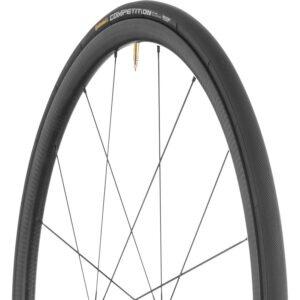
When we talk tubular tires I can’t help but think of Continental. The German brand is the choice of probably more than half of the World Tour squads.
The Continental Competition tubs are an all-rounder model with excellent grip in most weather conditions. They are extremely lightweight and also very tough, thanks to the Vectran belt insert.
These tubs can be compared to the Continental GP4000 clinchers in terms of grip, but the ride quality is far better since they can be ridden at lower pressures.
Despite their great puncture resistance, you shouldn’t expect to put big miles on them. As a downside, their excellent grip also makes them wear down quickly.
Hand made in Germany, these are not exactly the easiest tubular tires to mount. I strongly recommend to pre-stretch them on the rims for a couple of days before applying glue or self-adhesive tape.
A superb option for criterium racing tried and tested by the best racers in the world.
Materials: BlackChili compound, Vectran puncture protection insert
TPI: 180
Max pressure: 170 psi
Size: 19 mm, 21 mm, 23 mm, 25 mm
Weight: 264 g (25 mm)
Pros
- Great grip
- Lightweight
- Fast tire
Cons
- Hard to mount
2. Vittoria Corsa Control G Plus
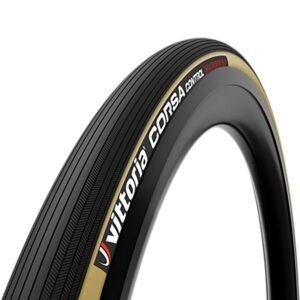
Another great tubular tire for racing, the Corsa Control G Plus is a fast tire that has been also optimized for the roughest road conditions thanks to a tough 320 TPI casing reinforced with graphene.
These are very grippy thanks to a tread that is extended further up the sidewalls than in normal tires. This grip is elevated by a chevron thread on the shoulder of the tire that seems to work wonderfully, especially under slippery conditions.
Not precisely the lightest tubular out there but the Corsa Control is a tough one. It has a reinforced Corespun-K casing that increases the sidewall protection. Speaking of sidewalls, I’m in love with the retro look of the tan wall version… but it’s also available in a inconspicuous full black.
It’s not easy to find a durable and puncture-resistant tire that is also fast, and Vittoria seems to have achieved that with the Corsa Control G Plus.
Materials: 4C Graphene G+ compound
TPI: 320
Max pressure: 170 psi
Size: 25 mm, 28 mm, 30 mm
Weight: 295 g (25 mm)
Pros
- Excellent grip
- Comfort
- Speed
Cons
- Price
3. Veloflex Roubaix

A tan wall handmade in Italy tubular tire that bears the name of the notorious Roubaix race? You can’t go more old school than that.
The Veloflex Roubaix offers a super smooth ride feeling and comfort even at higher pressures. Its natural rubber compound (that smells amazing!) features a chevron tread and it’s extremely grippy in the roughest road conditions.
While comfort and grip are at the core of the Roubaix, it doesn’t feel as fast-rolling as other “racier” tubular tires. On the other hand, it is a supremely tough tire featuring a thick layer of rubber and a puncture-resistant belt that protects efficiently the casing from road debris and glass cuts.
If you are looking for a tough, retro-style tubular tire and don’t mind sacrificing sheer speed, the Veloflex Roubaix is the way to go.
Materials: Natural rubber compound, calicot puncture-resistant layer
TPI: 320
Max pressure: 130 psi
Size: 25 mm
Weight: 290 g (25 mm)
Pros
- Style
- Comfort
- Grip
- Toughness
Cons
- Not a fast-rolling tire
4. Specialized S-Works Turbo Hell Of The North Tubular

This tubular tire comes only in a 28 mm version and that can only mean one thing – it is specifically designed for the most demanding roads in the world, the cobbles of Northern Europe.
It features a supple cotton casing that improves damping significantly and achieves less rolling resistance over cobbles, according to Specialized.
The Gripton rubber compound wraps around the casing far down the sidewalls and it proved to be really grippy under any sort of conditions. Specialized has also thickened the BlackBelt protection layer for extra peace of mind at the expense of added weight.
This is definitely not a tubular tire to ride steep climbs over smooth tarmac but certainly your best option if you plan to ride the sportive version of the Ronde van Vlaanderen or Paris-Roubaix Challenge.
Materials: Gripton compound, BlackBelt protection layer
TPI: 290
Max pressure: 150 psi
Size: 28 mm
Weight: 325 g (28 mm)
Pros
- Low rolling resistance
- Tough tire
Cons
- Heavy
5. Continental Sprinter Gatorskin Tubular
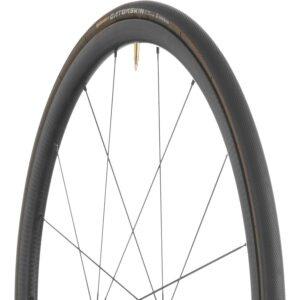
As the name implies, the Gatorskins are durable and tough tubulars with great puncture protection, ideal for daily training and long-distance rides.
Unlike many other tubular tires, these feature a protective layer on the sidewalls called “Duraskin” that helps prevent cuts and damage all around the casing. The result is a tire that is extremely difficult to puncture even riding on debris-heavy roads.
Even tough these tires are highly efficient against cuts and punctures, they tend to wear out relatively quickly and you shouldn’t expect to get more than 2,000 km out of them.
In the same way as the Competition tubulars, the Gatorskins are also hard to mount on the rim and will need to be stretched for a couple of days before gluing.
Despite putting the focus on puncture resistance, the Continental Gatorskin tubulars are also very fast rolling tires so you can’t rule them out for both training and racing.
Materials: BlackChili compound, Duraskin protection
TPI: 180
Max pressure: 150 psi
Size: 22 mm, 25 mm
Weight: 295 g (25 mm)
Pros
- Great puncture resistance
Cons
- Hard to mount
6. Tufo Elite Jet 160

Any weight-obsessed cyclist trying to build the ultimate lightweight machine will have the opportunity to shed valuable grams with the tire selection. It’s no coincidence that sooner or later everyone ends up with the Tufo Elite Jet 160 tubulars.
These are ridiculously featherweight tubulars, tipping the scales at just under 160 grams, very fast rolling, and grippy in most weather conditions. Their smooth tread gives them a supreme ride quality over smooth tarmac but they can be a true pain if ridden in bumpy or rough terrain since they only come in a bone-rattling 20 mm width.
The Elite Jet 160 is not only lightweight but relatively tough thanks to its overlapping sidewall construction to protect against lateral cuts, and a puncture proof ply that makes this tire highly flat resistant.
Ideal for uphill time trials or racing over very good terrain, the Tufo Elite Jet 160 might not be the cheapest but they are the lightest and fastest road tubs on the market.
Materials: Silica compound
TPI: 210
Max pressure: 220 psi
Size: 20 mm
Weight: 160 g (20 mm)
Pros
- Extremely lightweight
Cons
- Narrow tires
- High price
Buying Tips
Assuming that you will use tubular tires mostly for racing, the first factor to consider is the type of terrain you will be competing on.
If you race on a hilly parcours or an uphill time trial where weight is a concern, you’ll fare better with lightweight fast tires such as the Continental Competition tubular or the Tufo Elite Jet 160.
On the contrary, if the race is held over flat-ish terrain with rough road conditions and even cobblestones the clear candidates are hardcore tough tires such as the Veloflex Roubaix or the Specialized Turbo Hell of the North.
Another important factor to pick your best tubular tire is the convenience and ease of installation. I wouldn’t recommend any Continental model if you are new to gluing tubulars since these are very snug fitting and need to be prestretched.
If all you care about is ride feeling over smooth roads I would go for the Vittoria Corsa Control or the Veloflex, with the Corsas having the edge in terms of speed.
In the event that you also train on tubulars, the Continental Gatorskins are a safe bet to forget about punctures throughout the lifespan of the tires.
As with many bike parts, a decisive factor to take into consideration when buying tubular tires would be the price. It’s not a surprise that tubulars are on the higher end of the price range when it comes to tires, given that in most cases they are hand sewn.
While most of the best clincher tires rarely go over $40, it’s hard to find tubs for less than $60, and well over $100 for the lightest models.
Finally, before considering the jump to tubular tires, it’s a good idea to go over the pros and cons of this type of tire and compare them to clinchers or tubeless tires. Tubulars are certainly not for everyone!

Road cyclist, adventure traveler and graphic designer based in South East Asia, and working for international brands such as SpiceRoads Cycling and The Pedla.

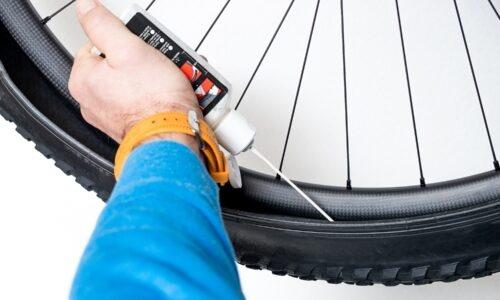
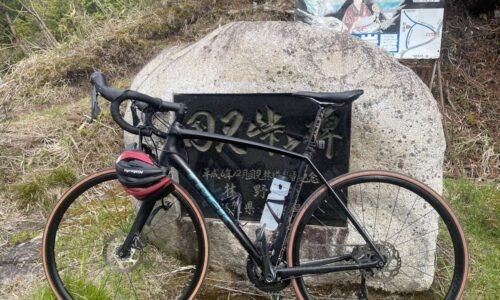
Having ridden tubular tires exclusively ( two exceptions mtn bike and when touring on someone else’s bike)
I have seen quite a bit of tires.
You can get inexpensive training tires that inmho beat clinchers hands down. Clinchers material just don’t cut it. Take forever to get heat in them, absolutely no suppleness might as well be solid rubber baby buggy wheels. I even repair my training tires(gasp! ) with needle and thread.
Die hard old school perhaps however there is no limit to
the treads, or widths, I will holdout even with the newest ‘tubeless’ variation….
Still just a clincher.
;0)
Thanks for your excellent article. Having just scored a pair of new wheels I am keen to try them out.Am new to tubs so having them so well explained was perfect for me. Keep up the good work.